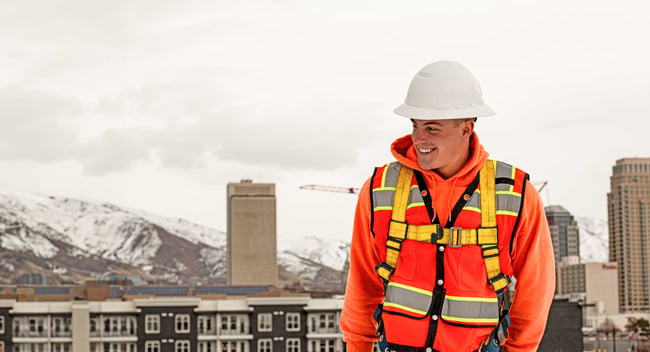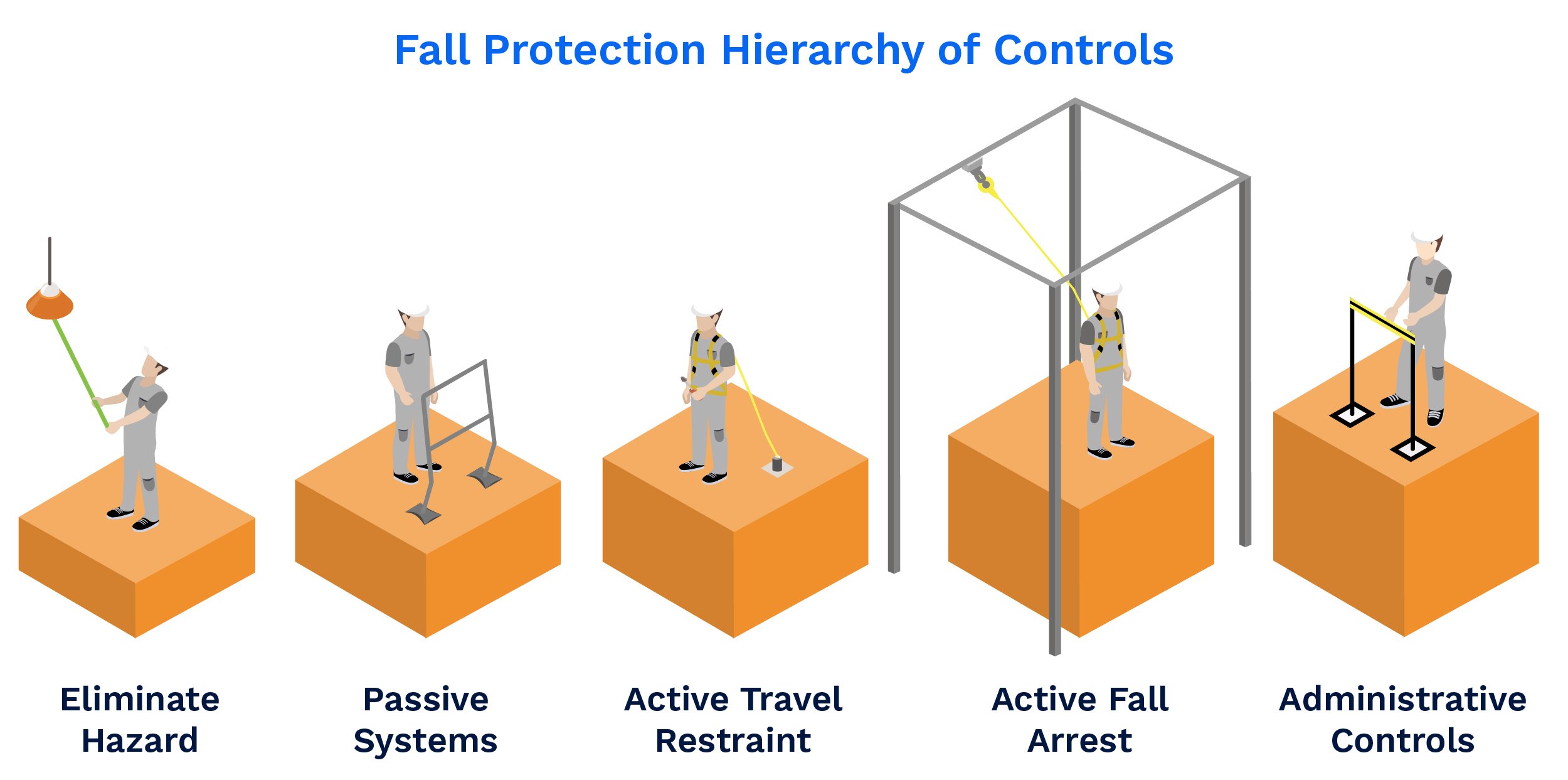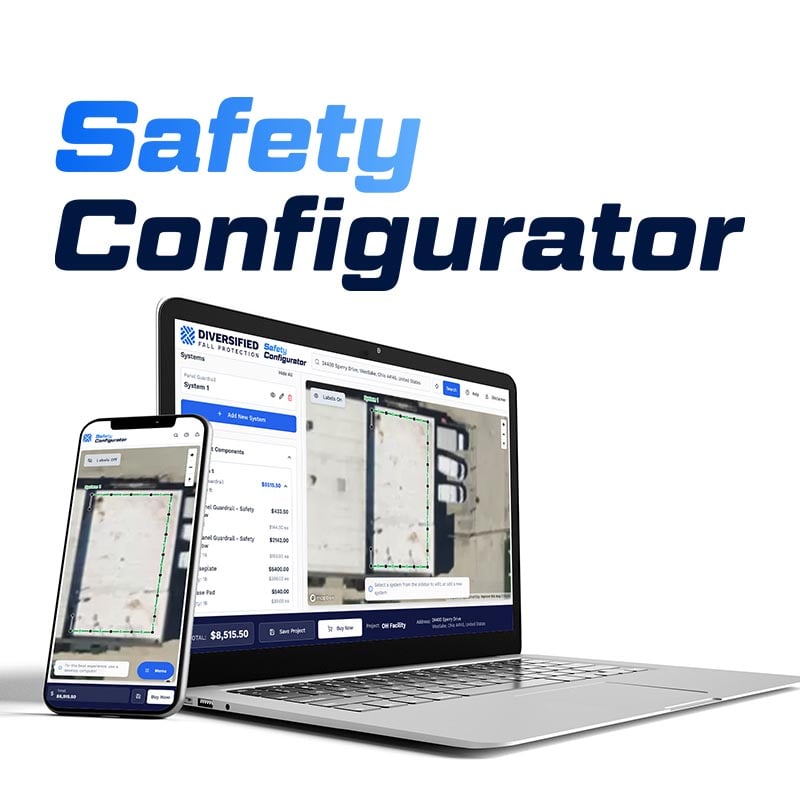
What is the Hierarchy of Fall Protection?
Ensuring worker safety is critical in any workplace environment. Effective fall protection strategies are key in reaching this goal. If you work in safety or are part of a management team, read this guide.
By exploring the multi-tiered hierarchy of fall protection, we will help you understand the intricacies of this vital safety framework. We will start with the basics and then show real-world uses in different industries. Our goal is to help you create a safer and more compliant workplace.
Understanding the Hierarchy of Fall Protection
The hierarchy of fall protection is a multi-tiered approach. It aims to ensure maximum safety in environments where falls are a risk.
It is structured to prioritize methods that eliminate risks over those that only minimize them. This systematic approach is fundamental to workplace safety, providing a step-by-step guide for assessing and managing fall hazards.
By adhering to this hierarchy, organizations can effectively reduce the incidence of fall-related accidents. This proactive approach not only enhances the safety of workers but also contributes to a workplace safety culture. It ensures compliance with safety regulations, reduces liability risks, and promotes a more aware and educated workforce.
A Breakdown of Each Level Within The Hierarchy
Understanding the important role of the hierarchy in enhancing workplace safety, let's break down each level, starting with the most effective methods first:
- Eliminate the Hazard: This involves redesigning the work environment or changing work practices to remove the fall risk. It's the most direct and effective method of fall protection. By eliminating the hazard, the need for further protective measures becomes redundant. This level is the most desirable outcome in the hierarchy of fall protection.
- Passive Fall Protection: Guardrails, skylight screens, and other barriers are examples of passive fall protection. They create a physical barrier between the worker and the fall hazard. These systems provide continuous protection without requiring the active involvement of the worker. Passive fall protection becomes a practical option when you cannot eliminate fall hazards.
- Active Travel Restraint: This active fall protection method includes systems like body harnesses connected to anchor points, preventing the worker from reaching a point where a fall could occur. Active travel restraints require some level of worker participation. They are more involved than passive systems but are less cumbersome than fall arrest systems. They are ideal in situations where the work environment allows for their use.
- Active Fall Arrest: Another form of active fall protection, these are systems designed to safely stop a fall that is in progress, such as full-body harnesses with shock-absorbing lanyards or retractable lifelines. When other means cannot eliminate or sufficiently reduce the fall risk, they’re an option. While not preventing falls, they mitigate the risk of serious injury during a fall.
- Administrative Controls: These are workplace policies and training procedures to reduce the likelihood of falls. Examples include regular safety training, warning signs, and work schedules that minimize exposure to fall hazards. Administrative controls, although important, rely heavily on worker behavior and compliance, making them the least effective in the hierarchy. Typically, organizations implement them alongside other fall protection methods.

Implementing Fall Protection in Various Industries
By understanding and effectively implementing each level of the fall protection hierarchy, organizations can create customized safety plans to minimize fall risks. Here is how some industries are doing it:
- Manufacturing Facilities: Manufacturing environments vary greatly, from automotive assembly lines to food processing plants. Each facility has unique fall hazards, such as elevated work platforms or machinery maintenance areas. Tailored solutions might include custom-designed guardrails or overhead fall arrest systems that cater to the specific layout and workflow of the facility.
- Educational Institutions: Schools and universities have distinct fall protection needs, particularly in maintenance areas and sports facilities. The solutions need to account for the safety of not just the employees but also the students who frequent these areas. For a university’s sports complex, installing safety nets under bleachers or around climbing walls can protect both student-athletes and spectators.
- Construction: In the construction industry, portable fall arrest systems might be necessary for temporary work sites. In contrast, the entertainment industry, especially in settings like theaters or concert halls, might require discreet fall protection solutions that don’t interfere with aesthetics.
Every workplace has its unique architecture and fall hazards. Diversified Fall Protection (DFP) specializes in analyzing the distinct requirements of different industries and providing solutions that are not just compliant with safety standards but tailored to the specific needs of each industry.
Diversified Fall Protection Can Help
At Diversified Fall Protection, we understand that fall protection is crucial to workplace safety. That's why we offer a comprehensive approach covering all fall protection aspects, from engineering design to employee training. Our range of services ensures that every fall protection component is cohesive and effective, providing a safer workplace for your employees.
Our team of experts can design, install, and provide training for custom fall arrest systems that suit your specific needs. By providing a unified approach, we ensure consistency in quality and compliance, simplifying the business process. You can rely on us for all your fall protection needs, from assessment to implementation and training.
We also offer comprehensive training programs to ensure that employees are proficient in using fall protection systems and know safety protocols. Our customized training modules focus on correctly using personal fall arrest systems in hazardous environments, ensuring your employees are well prepared.
At DFP, we keep up with changing safety rules and industry standards. This ensures our solutions and training programs are always compliant and current. Our customized solutions and thorough approach meet the specific fall protection needs of different industries and promote a safety culture that fits well with the daily operations of businesses.
If you want to change your current system or need help with new installations, our team is here to assist. For more information, to explore our services, or to schedule a consultation, please visit or contact us. Take the first step towards a safer workplace today.
Schedule an assessment with Diversified Fall Protection
Contact Us to request a fall safety review

b-1.jpg?width=1368&height=1340&name=Rail%20(175)b-1.jpg)

